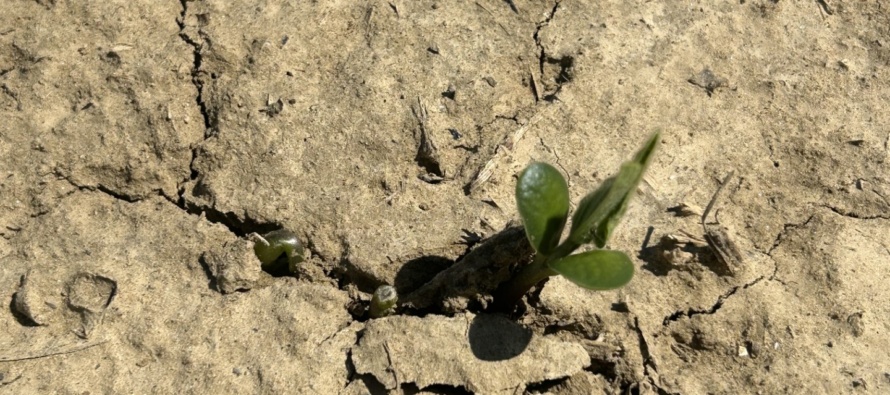Replant Considerations in Soybean

Related Articles
- 2010 Soybean And Corn Variety Trial Data 3
- Flag The Technology 0
- Rice Seeding Rate Calculator and Chart 0
Latest Tweets
Wet weather has been the story of this growing season thus far across the state. Rain has delayed soybean planting in many areas, especially on heavier soils, and what has been planted has probably been affected at least in some way by the wet conditions. Anerobic soil environments, exaggerated herbicide injury, diseases, hail, soil crusting, and loss from flood can all cause reductions in soybean stands when we experience weather like what has and continues to take place across Mississippi. These stand reductions have spurred on a few conversations already about replanting.
Over the past couple of years, a graduate student with the Mississippi State Extension Soybean Agronomy Program, Mr. Paul O’Neal, has been looking at simulated stand loss scenarios in soybean and evaluating yield response. To do this, two soybean varieties were planted at different ratios to a target seeding rate of 140,000 seed/acre; one contained a glufosinate herbicide trait and the other did not. At around the V1 growth stage, glufosinate was applied across all treatments to remove a certain percentage of the stand in each plot in an irregular pattern like what would be expected in a field scenario. The yield response to final stand is plotted out in the graph below.
What was notable in the data was that until there were stand reductions of 60-65% loss, there was not a significant yield response. Populations as low as 50,000 to 55,000 plants per acre held right around full yield potential. Now, populations that low early in the season were more variable in their yield response, they leave no margin for error, and are certainly susceptible to yield losses if the crop encounters any other significant stress or stand loss as it continues throughout the season. But, if the rest of the season progresses smoothly, our current soybean varieties have proven that they can fill in and compensate for quite a bit of loss.
Another thing to consider when deciding on replants is the yield response to plant date. Several studies across the midsouth have shown that the optimum planting window for our area is around April 5th to April 20th (given the right weather conditions). For every day after that optimum window closes, you can expect somewhere around a ½ bushel per acre loss in yield potential. So, the question becomes which will be the biggest yield limiting factor: a reduced stand or the delay in the final planting date?
Considering all of this, a good threshold to target when evaluating a field that has experienced reductions or loss is 70,000 to 75,000 standing plants per acre (assuming fairly even distribution with no large gaps). At that population or higher, you will likely retain all yield potential even when you encounter some stress later in the season. When populations fall below that threshold, the decision to keep becomes more of a risk.





Let me tell You a sad story ! There are no comments yet, but You can be first one to comment this article.
Write a comment